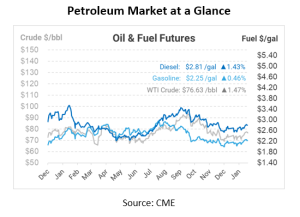
Public Hearing: California’s Push for Green Transportation
California, known for its progressive environmental policies, is continuing a transformative journey towards a more sustainable and green transportation sector. The California Air Resources Board (CARB) is inviting public input through February 20, 2024, on proposed changes to the state’s low-carbon fuel standard, with the aim of significantly reducing greenhouse gas emissions in the transportation industry.
The proposed amendments to California’s low-carbon fuel standard are ambitious. If implemented, they could reduce greenhouse gas emissions by a staggering 558 million metric tons in carbon dioxide equivalent between 2024 and 2046.
One of the standout features of California’s proposal is the strengthening of LCFS carbon intensity (CI) benchmarks. The plan targets a 30% reduction in fuel CI by 2030, an increase from the previous 20% goal. To kickstart this journey, there’s a planned one-time 5% reduction in the CI benchmark set for 2025.
But that’s not all; California’s proposal introduces the Automatic Acceleration Mechanism (AAM), a robust tool designed to track the CI benchmark’s rigor. The AAM springs into action under specific regulatory conditions, sending a clear message to the market: investments in low-carbon fuel production and vital technologies are essential for long-term emissions reduction in transportation.
Embracing Renewable Diesel and Sustainable Aviation Fuel
Since the establishment of the current carbon intensity benchmarks in 2018, the renewable diesel industry has exceeded all expectations. Derived from sources like vegetable oils and animal fats, renewable diesel offers a cleaner alternative to traditional diesel, reducing carbon emissions and promoting environmental responsibility.
A noteworthy proposal from CARB involves ending a low-carbon fuel standard exemption for intrastate fossil jet fuel starting in 2028. This move aligns with the growing momentum of the sustainable aviation fuel industry in the US and globally. With 11.6 million gallons of alternative jet fuel produced in 2022, the future of sustainable aviation fuel appears promising. These alternative fuels can replace fossil jet fuel without requiring engine modifications, and the federal government offers tax credits of up to $1.25 per gallon to sustainable aviation fuel producers. The California Scoping Plan for 2022 anticipates a significant shift away from fossil jet fuel by 2045, with a target of achieving 20% zero-emission aviation.
Expanding Zero-Emission Vehicle Infrastructure
Expanding Zero-Emission Vehicle (ZEV) infrastructure crediting to medium and heavy-duty vehicles is another groundbreaking step. This expansion aims to accelerate the construction and availability of hydrogen refueling and electric vehicle charging stations, particularly for Class 6-8 vehicles. It’s a significant leap towards a green transportation option and reduced emissions in the medium and heavy-duty sectors.
The proposed changes, which encompass stringent carbon intensity benchmarks and a commitment to supporting renewable fuels for both road and aviation, signal the need for the industry to proactively prepare for a significant shift in business operations, aligning with the state’s determined efforts to reduce carbon emissions and promote a sustainable future.

This article is part of Daily Market News & Insights
Tagged: California, green transportation
MARKET CONDITION REPORT - DISCLAIMER
The information contained herein is derived from sources believed to be reliable; however, this information is not guaranteed as to its accuracy or completeness. Furthermore, no responsibility is assumed for use of this material and no express or implied warranties or guarantees are made. This material and any view or comment expressed herein are provided for informational purposes only and should not be construed in any way as an inducement or recommendation to buy or sell products, commodity futures or options contracts.





